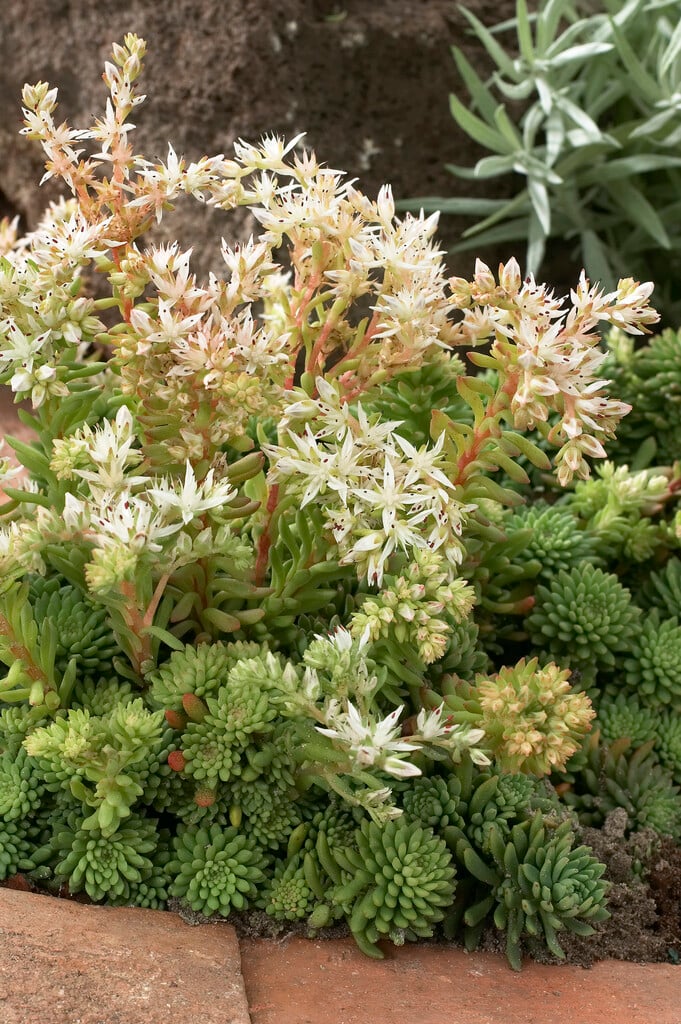Sedum glaucophyllum
A low-growing, evergreen perennial, with neat rosettes of fleshy, green or blue-green leaves; the foliage takes on pink and purple hues in autumn. Starry, white flowers are borne in clusters on 10cm flowerstems in early summer
Size
Ultimate height
Up to 10cmTime to ultimate height
2–5 yearsUltimate spread
0.1–0.5 metresGrowing conditions
Moisture
Well–drainedpH
Alkaline, NeutralColour & scent
| Stem | Flower | Foliage | Fruit | |
| Spring | Green Blue | |||
|---|---|---|---|---|
| Summer | White | Green Blue | ||
| Autumn | Green Pink Purple | |||
| Winter | Green Pink Purple |
Position
- Full sun
Aspect
East–facing or South–facing or West–facing
Exposure
ShelteredDrought resistance
Yes Hardiness
H4Botanical details
- Family
- Crassulaceae
- Native to GB / Ireland
- No
- Foliage
- Evergreen
- Habit
- Matforming
- Genus
Sedum may be annuals or herbaceous or evergreen perennials with succulent stems and leaves and clusters of small, star-shaped flowers in summer or autumn
- Name status
Correct
How to grow
Cultivation
Grow in a sheltered position in moderately fertile, well-drained, alkaline to neutral soil in full sun. See hardy cacti and succulent cultivation for further advice
Propagation
Propagate by softwoood cuttings
Suggested planting locations and garden types
- Coastal
- Cottage and informal garden
- Patio and container plants
- Rock garden
- Low Maintenance
- Garden edging
- Ground cover
Pruning
Trim back after flowering to maintain shape
Pests
Generally pest-free
Diseases
May be susceptible to fungal and bacterial crown and root rots
Get involved
The Royal Horticultural Society is the UK’s leading gardening charity. We aim to enrich everyone’s life through plants, and make the UK a greener and more beautiful place.
